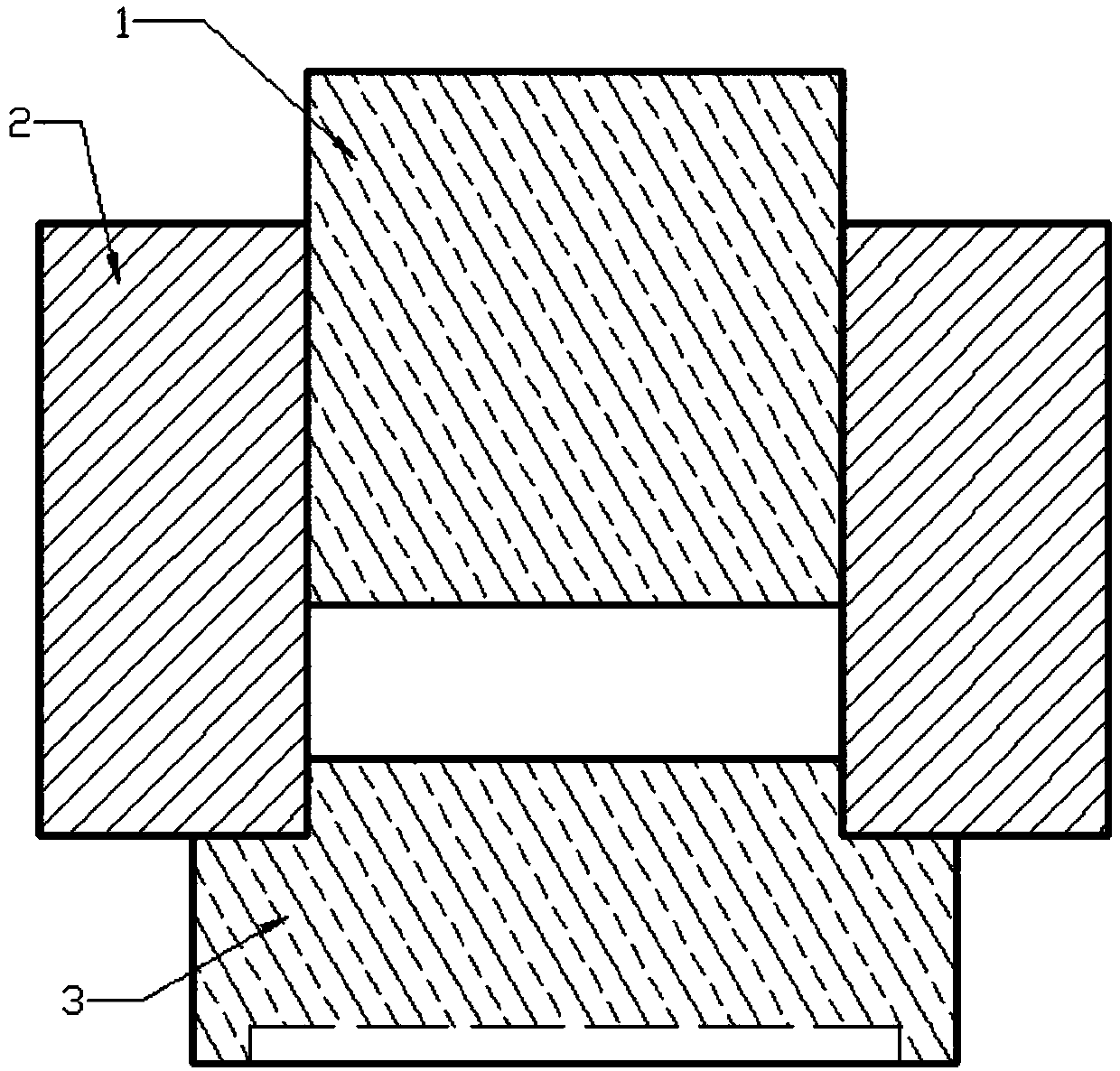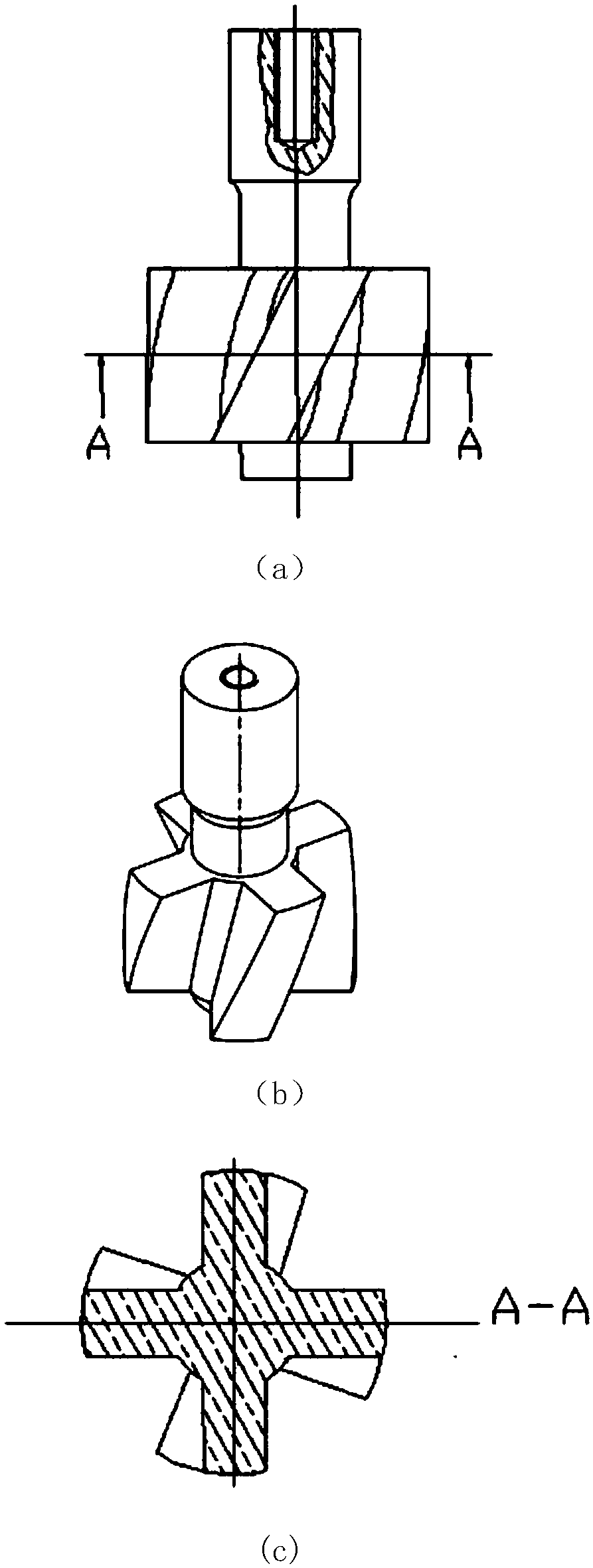Forming method for nano particle reinforced aluminum-based composite material
A composite material and enhanced aluminum-based technology, which is applied in the field of metal casting and forming, can solve the problems of uneven dispersion of nano-ceramic particles, easy agglomeration, and difficulty in filling, achieving efficient and simple process and forming method, high content, and improved mechanical properties. Effect
- Summary
- Abstract
- Description
- Claims
- Application Information
AI Technical Summary
Problems solved by technology
Method used
Image
Examples
Embodiment 1
[0052] Step 1: Weigh nano-SiC powder with an average particle size of 40nm and a purity greater than 99.9% and Al-Cu alloy powder with an average particle size of 70 μm and a purity greater than or equal to 99.85%, wherein the nano-SiC powder accounts for 3% of the total weight. Dry and oxidize the nano-SiC powder before batching. The drying temperature is 150°C for 1 hour, and then the temperature in the heating furnace is raised to 1000°C for 2 hours of oxidation.
[0053] The second step: put the mixed powder into a sealed tank, vacuumize and pass argon. The sealed tank was placed on a rolling mixer and mechanically stirred and mixed for 10 hours to prepare a composite powder with uniform distribution of nano-ceramic particles.
[0054] Step 3: Put the composite powder into a hot-press sintering furnace and heat-press it into a prefabricated block with a pressure of 10 MPa and a pressing temperature of 400°C. A block of about 150 g is made by using a custom-made graphite m...
Embodiment 2
[0061] Step 1: Weigh nano-SiC powder with an average particle size of 100nm and a purity greater than 99.9% and Al powder with an average particle size of 200 μm and a purity greater than or equal to 99.85%, wherein the nano-SiC powder accounts for 10% of the total weight. Dry and oxidize the nano-SiC powder before batching. The drying temperature is 110°C for 1 hour, and then the temperature in the heating furnace is raised to 1000°C for 2 hours of oxidation.
[0062] The second step: put the mixed powder into a sealed tank, vacuumize and pass argon. The sealed tank was placed on a rolling mixer and mechanically stirred and mixed for 20 hours to prepare a composite powder with uniform distribution of nano-ceramic particles.
[0063] Step 3: Put the composite powder into a hot-pressed sintering furnace for hot pressing (30MPa, 500°C) to form a prefabricated block, and use a customized graphite mold to make a block of about 200g.
[0064] Step 4: Put the crucible with the pre...
Embodiment 3
[0070] Step 1: Weigh nano-Al with an average particle size of 10nm and a purity greater than 99.9% 2 o 3 powder and Al-Si powder with an average particle size of 70 μm and a purity greater than or equal to 99.85%, in which nano-Al 2 o 3 Powder accounted for 5% of the total weight. Nano-Al 2 o 3 powder to dry. Dry at 140°C for 1 hour.
[0071] The second step: put the mixed powder into a sealed tank, vacuumize and pass argon. The sealed tank was placed on a rolling mixer and mechanically stirred and mixed for 15 hours to prepare a composite powder with uniform distribution of nano-ceramic particles.
[0072] Step 3: Put the composite powder into a hot-pressed sintering furnace for hot pressing (20MPa, 450°C) into a prefabricated block, and use a customized graphite mold to make a block of about 150g.
[0073] Step 4: Put the crucible with the prefabricated block into a high temperature resistance furnace to melt at about 740°C and keep it warm for 20 minutes.
[0074] ...
PUM
| Property | Measurement | Unit |
|---|---|---|
| particle diameter | aaaaa | aaaaa |
| particle diameter | aaaaa | aaaaa |
| tensile strength | aaaaa | aaaaa |
Abstract
Description
Claims
Application Information
 Login to View More
Login to View More - R&D
- Intellectual Property
- Life Sciences
- Materials
- Tech Scout
- Unparalleled Data Quality
- Higher Quality Content
- 60% Fewer Hallucinations
Browse by: Latest US Patents, China's latest patents, Technical Efficacy Thesaurus, Application Domain, Technology Topic, Popular Technical Reports.
© 2025 PatSnap. All rights reserved.Legal|Privacy policy|Modern Slavery Act Transparency Statement|Sitemap|About US| Contact US: help@patsnap.com



